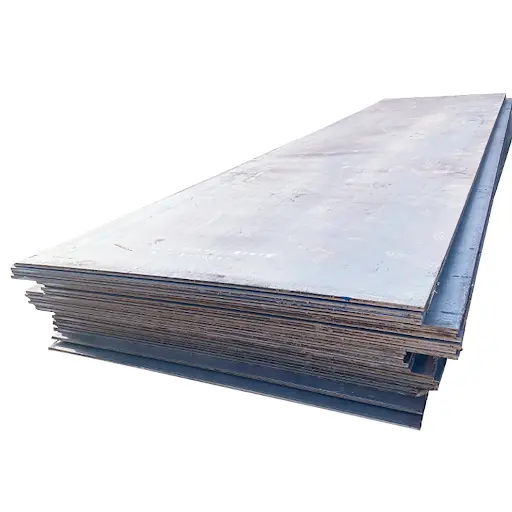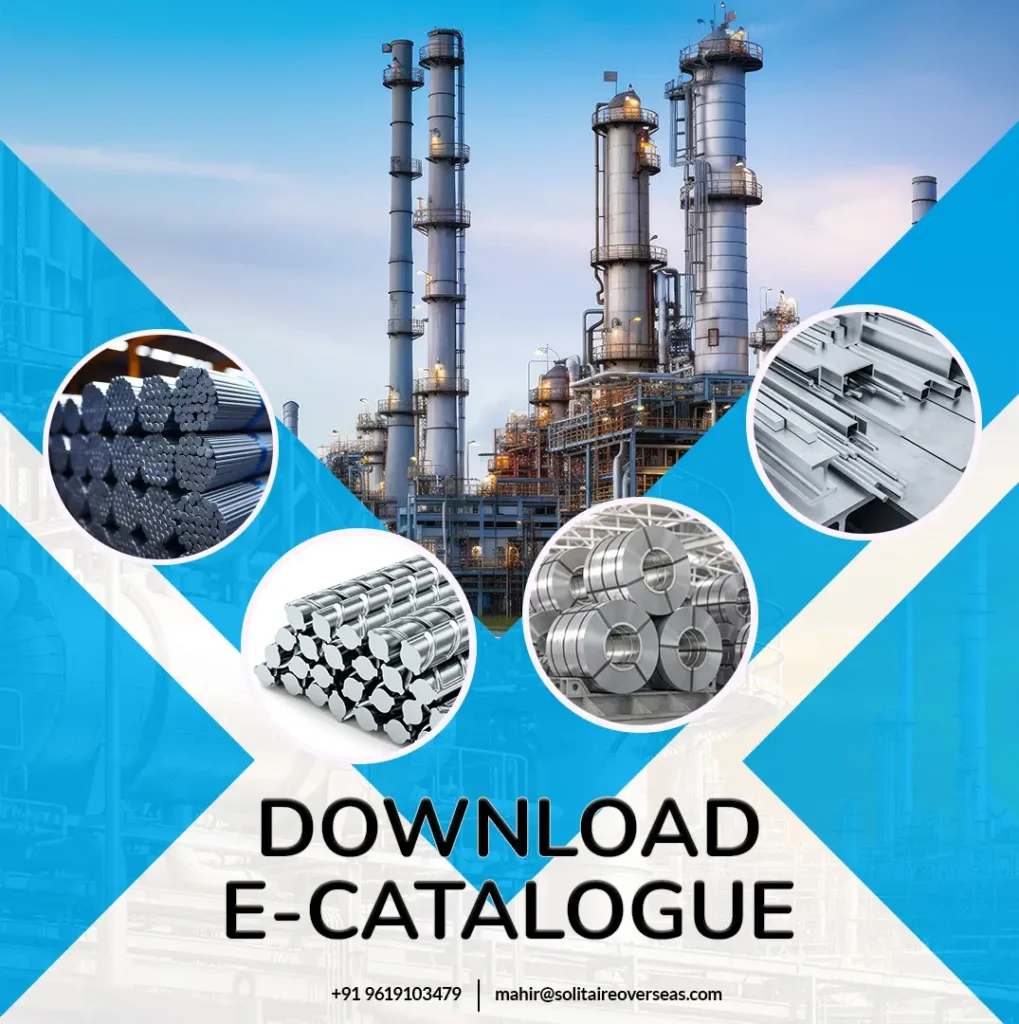
Carbon Steel Grades
Talk To Us – We’re Here To Help
Carbon Steel Grades is mainly composed of carbon and iron, with only small amounts of other elements. It’s one of the most widely produced steel types, making up about 90% of all steel production. Carbon steel grade is categorized into three main types based on its carbon content:
- Low Carbon Steels / Mild Steels (up to 0.3% carbon): These are softer and more ductile, making them easy to work with, weld, and shape.
- Medium Carbon Steels (0.3–0.6% carbon): Known for higher strength and hardness, they are used in applications requiring more durability.
- High Carbon Steels (more than 0.6% carbon): The hardest and strongest of the group, these steels are used in tools and high-strength applications but are less ductile.
These steels are popular in large-scale production because of their affordability and reliability in construction and industrial uses. You can explore more details about carbon steel in our mild steel vs. carbon steel guide!
What Is Carbon Steel?
Carbon steel is primarily made of iron and carbon, the two main elements that give it its strength. While pure iron on its own is not very strong, the addition of carbon greatly enhances its toughness and durability.
In its raw form, iron contains a high level of carbon, which can reach up to 2.1%. This is the maximum carbon content a material can have while still being classified as steel. The carbon is what gives steel its hardness and strength, making it an essential component in many construction and industrial applications.
What Is Low Carbon Steel?
Low carbon steel, also known as mild steel, has a lower carbon content compared to other types of steel, making it less strong but more ductile and easier to work with. This makes it highly machinable and suitable for a wide range of applications.
Alloying elements can be added to low carbon steel to improve its properties without increasing its weight. For instance, manganese can be added to enhance hardness without making the steel heavier. When low carbon steel includes such additional elements, it’s often referred to as high strength, low alloy (HSLA) steel.
Common Grades of Low Carbon Steel Solitaire Steel stocks popular low carbon steel grades, including ASTM A36, A572 Grades 42 & 50, and A830-1020. These grades offer a good balance of moderate strength, high ductility, and lighter weight due to their low carbon content and alloying elements.
Chemical Composition of Common Low Carbon Plate Grades
| Grade | Carbon Max | Manganese | Phosphorus Max | Sulfur Max | Silicon |
| A36 up to 3/4” thick | 0.25% | N/A | 0.030% | 0.030% | 0.40% Max |
| A36 >3/4 – 1 ½” thick | 0.25% | 0.80-1.20% | 0.030% | 0.030% | 0.40% Max |
| A36 > 1 ½ – 2 ½” thick | 0.26% | 0.80-1.20% | 0.030% | 0.030% | 0.15-0.40% |
| A36 >2 ½ – 4” thick | 0.27% | 0.85-1.20% | 0.030% | 0.030% | 0.15-0.40% |
| A36 >4” thick | 0.29% | 0.85-1.20% | 0.030% | 0.030% | 0.15-0.40% |
| A572 Grade 42 | 0.21% | 1.35% | 0.030% | 0.030% | 0.15-0.40% |
| A572 Grade 50 | 0.23% | 1.35% | 0.030% | 0.030% | 0.15-0.40% |
| A830 Grade 1020 | 0.18-0.23% | 0.30-0.60% | 0.030% | 0.030% | N/A |
Mechanical Properties of Common Low Carbon Plate Grades
| Grade | Yield Point | Tensile |
| A36 | 36 ksi | 58-80 ksi |
| A572 Grade 42 | 42 ksi | 60 ksi |
| A572 Grade 50 | 50 ksi | 65 ksi |
Common Applications of Low Carbon Steel
Low carbon steel is widely used across industries due to its affordability, flexibility, and strength. Its properties make it ideal for structural applications like building construction, bridges, and transmission towers, where materials need to handle high stress while being easy to shape.
It’s also a popular choice in sectors like automotive, heavy equipment, and oil and gas, where it’s used for making mechanical tubes, fluid transport pipes, and structural tubing. While Solitaire Steel doesn’t manufacture these specific products, we provide steel plates and processed plate parts to support fabricators in producing these items.
What Is Medium Carbon Steel?
Medium carbon steel strikes a balance between low and high carbon steels, offering higher strength and hardness than low carbon steel but remaining more ductile than high carbon steel. It often includes other alloys like manganese, which enhance its properties.
When extra toughness and hardness are needed, medium carbon steel can undergo heat treatments like quenching and tempering. This process boosts its mechanical properties without sacrificing machinability. Quenching involves heating the steel to 1,500-1,650°F and cooling it rapidly with water. Tempering then reheats the steel to 300-700°F and lets it air-cool, adjusting its grain structure for improved hardness.
Grades of Medium Carbon Steel Solitaire Steel stocks popular medium carbon steel grades like ASTM A516 Grade 70 and A830-1045. These grades offer a balance of strength, hardness, ductility, and wear resistance, making them versatile for various applications.
Chemical Composition of Common Medium Carbon Plate Grades
| Grades | Carbon | Manganese | Phosphorus Max | Sulfur Max | Silicon |
| A516 Grade 70 >2” & ≤4” thick | 0.30% | 0.85-1.20% | 0.025% | 0.025% | 0.15-0.40% |
| A516 Grade 70 >4” thick | 0.31% | 0.85-1.20% | 0.025% | 0.025% | 0.15-0.40% |
| A830-1045 | 0.43-0.50% | 0.60-0.90% | 0.030% | 0.030% | N/A |
Mechanical Properties of Common Medium Carbon Plate Grades
| Grades | Yield Point | Tensile |
| A516 Grade 70 | 38 ksi | 7-90 ksi |
Common Medium Carbon Steel Applications
Medium carbon steel is widely used in various industries due to its strength and durability. It’s ideal for applications where materials must endure high stress without breaking or wearing down. This includes machine parts like gears, axles, and bolts, as well as pressure vessel tanks and automotive components. Also, within the construction & manufacturing of medium carbon steel is often used for building structures, bridges, and heavy-duty equipment. While Solitaire Steel doesn’t manufacture these products, we supply the steel plate and processed plate parts needed by fabricators who do.
What is High Carbon Steel?
High carbon steel is the strongest and hardest among carbon steels, offering greater strength than mild and medium carbon steel. However, it’s less ductile, making it harder to machine or form. High carbon steel can be heat-treated to boost hardness and wear resistance, making it ideal for applications where the steel must withstand significant stress, such as cutting tools and chisels.
Ultra-High Carbon Steel
Ultra-high carbon steel, even stronger than high carbon steel, is used in specialized applications that demand extreme toughness. Due to its strength, it’s almost impossible to weld or shape, making it less common.
Common Applications of High and Ultra-High Carbon Steel
High carbon steel is frequently used to make durable cutting tools like knives, drills, and saw blades because of its sharp edge retention. Ultra-high carbon steel is used in truck springs and metal cutting tools that require extreme hardness. While Solitaire Steel doesn’t produce these products, we supply the steel plate and processed parts for fabricators who do.
Supply and Exporter
FAQs
Carbon steel grades commonly used include A36, A529, A572, 1020, 1045, and 4130. These grades vary in their carbon content and mechanical properties, making them suitable for different structural and industrial applications.
Yes, grade 8.8 fasteners are made from medium carbon steel, which is alloyed with elements like molybdenum, vanadium, manganese, and sometimes boron or cobalt. These alloying elements enhance the fastener’s strength, durability, and resistance to wear, making grade 8.8 fasteners suitable for high-stress applications.
Grade 2 carbon steel is a low-carbon steel known for its affordability and workability. It is less durable compared to higher-grade steels but is widely used for general-purpose applications. Grade 2 fasteners are common in non-critical, low-stress environments due to their ease of forming and machining.


